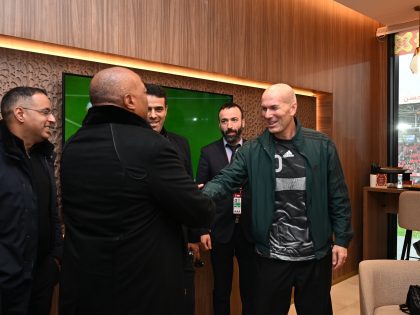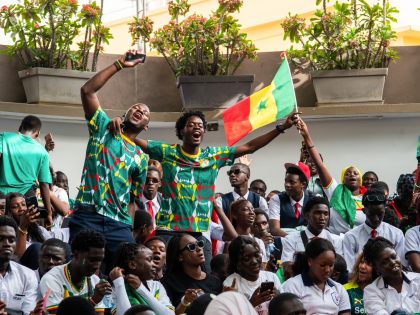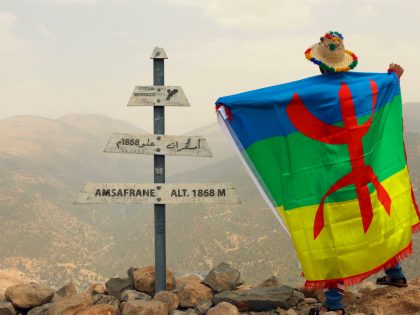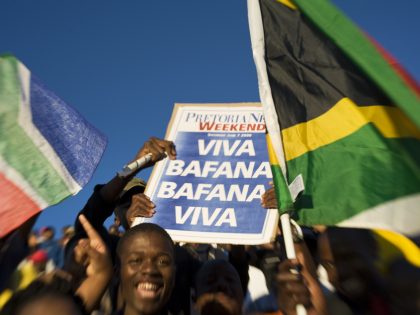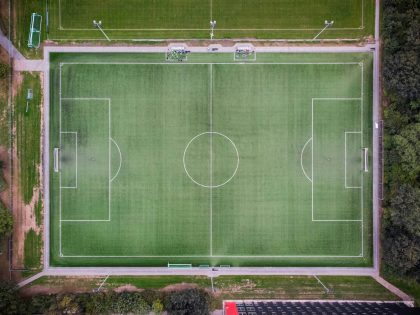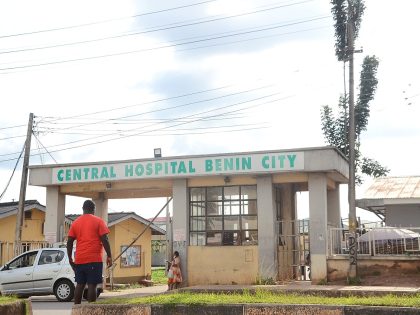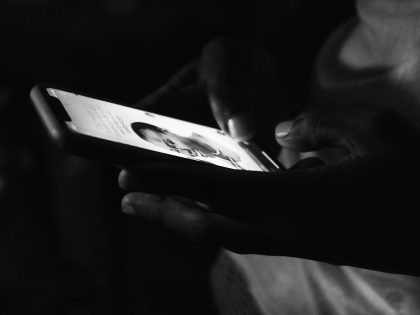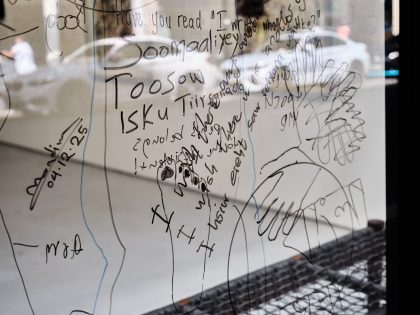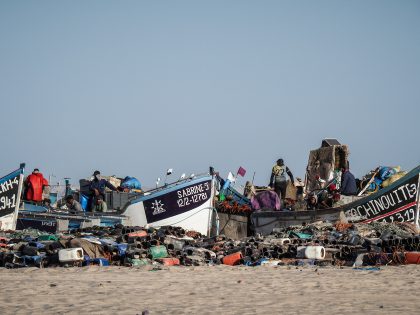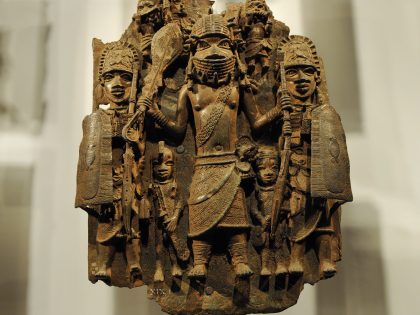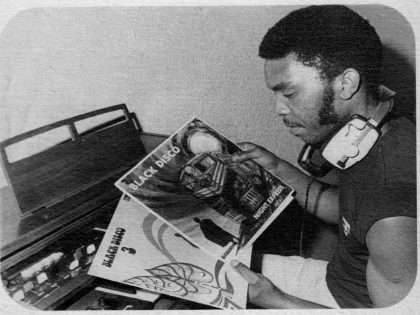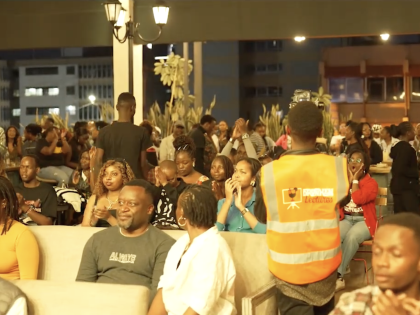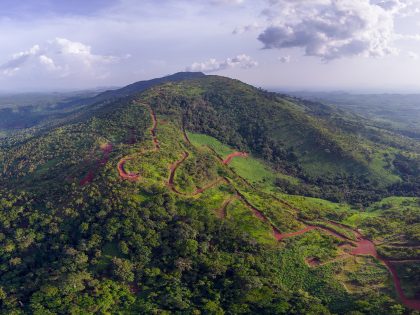The perfect wall to paint
The illustrators Fuzzy Slipperz and Skubalisto and the photographer Mooki Mooks on being an artist in present-day South Africa.

Photo: Karabo Mooki.
Sometime last year, I attended an exhibition opening entitled “Dreams Close To Home” at the Two by Two Art Studio in Newtown, Johannesburg. It was the culmination of a self-initiated project by the artists Lisolomzi Pikoli (Fuzzy Slipperz, illustrator), Skhumbuzo Vabaza (Skubalisto, illustrator), and Karabo Mooki (Mooki Mooks, photographer) which saw them go across parts of South Africa in search of the perfect wall to paint, and swiftly proceeding to do so every time they stumbled upon one.
The trip begun with Mooki Mooks’ and Fuzzy Slipperz’ train trip down to Cape Town where they connected with Skhubalisto. From then on, they traveled by vehicle through the vast, lush winelands and beaches of the Southern Coast. They hit up spots in Jeffreys Bay, Port Elizabeth, and the former Transkei (all in the Eastern Cape Province); Mooki Mooks’ trusty camera captured the adventures. The three had their final stop in Johannesburg where they held their well-received exhibition.
Below is a conversation I had with all three on the day about being an artist in present-day South Africa. But first this short video interview and scenes from the opening night:
During the interview, transcribed below, the artists also touched on what it means to paint at home in South Africa as opposed to other countries they’ve visited.
As working young artists in South Africa, how do you survive?
Skubalisto: It’s tough skin and a positive mental attitude and drive. Sink or swim, you can never stop no matter what. At the end of the day, we feel more like [pioneers] because there’s not much of an industry. There are people who’ve done it before, but we’re trying to carry that torch and build that fire. It’s a tough industry, but it’s a beautiful industry and it’s fun!
Fuzzy Slipperz: Also, I think it’s important for artists to do projects independently, off of their own steam. RVCA helped us out in this whole thing, but me and Skhumbuzo had been thinking about it for a while. I think that’s quite important because everybody wants to make it into a certain gallery or be associated with certain brands. [I’d rather be known for] self-initiated projects that then get recognised. But it’s tough, [but] there’s no tough with us. This trip was, let’s just say the budget was tight, but we made it work!
Mooki Mooks: In actual fact, your art should speak [louder] than brands, and that’s what we tried to achieve. I’ve been documenting the trip; their art truly speaks louder. Without their art the brand’s nothing.
You’ve all spent some time travelling overseas. What were your experiences like?
Mooki Mooks: Norway was fantastic! I’m back to be back in the homelands though.
Skubalisto: I was based in San Francisco for a while, and that was my school of thought. That’s where I started painting, and that’s where I was influenced. There are a lot more artists there; there are a lot more people who pursue art as a career and take it professionally, so there was a lot more competition. At the same time, it feels that now I’m back home, my work has completely flipped, as opposed to when I was painting in the US. That’s the beauty of being back home; it feels like my work has found its soul a little more.
Fuzzy Slipperz: I was in Berlin for three months, and I did my first overseas exhibition. For me as a person who’s into art in general, street art or contemporary, it’s the hub! Even though I had a small gallery, I was treated really well. It was good to see an art-driven society. And though that was beautiful and it was really fun, [I got to] see my dream come true and whatever…I don’t think as artists we should ever really be satisfied. There are a lot of things that worry me about [our] socio-political as African people, as South African people looking toward a future – all these things are always on my mind. And I think that’s, in a big way, why we called this Dreams Close To Home. We’ve been traveling and doing all this stuff, but we grew up over here, and that’s the only thing that makes our art speak originally in any way – it’s our natural influences from where we’re from. What you want to do is carry on growing and understanding your own landscape; it’s what informs your art; it flows out naturally that way.
And how was it painting throughout this trip?
Fuzzy Slipperz: Traveling through there Eastern Cape, I go there during December for Christmas and all that stuff. It was cool to go the with my friends and do whatever we want–Port Elizabeth, Transkei, wherever! We me cool people, and we also got humbled a lot of the time. We didn’t get a lot of the responses that we’re used to; people were really engaging [and] forthcoming, or they just didn’t give a shit!
Skubalisto: A lot of the people were beyond curious. Their curiosity led them to a point where we’d be painting in freezing, howling weather – the weather sucked in PE! There were people who got there from the time we were setting up, and left when we finished.
Fuzzy: The content was quite an important part to us. We wanted to relate on a South African level. For instance, in PE we drew portraits of our mothers, our interpretations of their energy or essence. That for us is how the concept hit home; we were extending ourselves.
